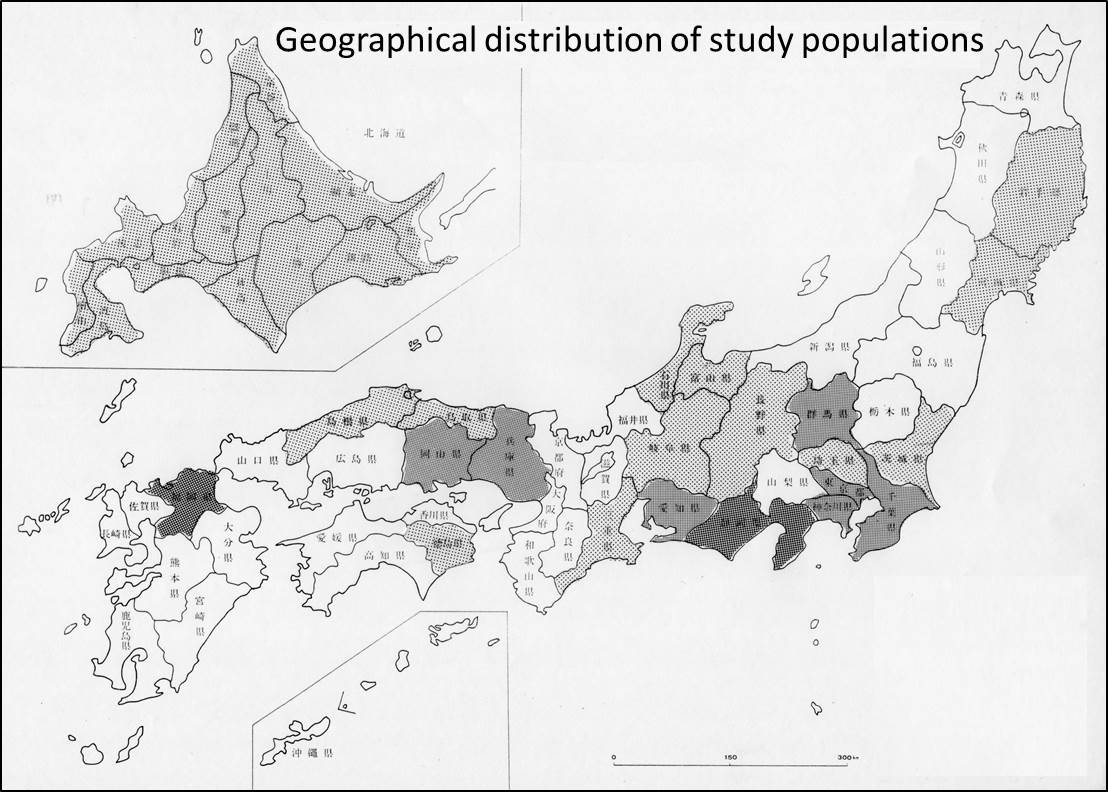Radiological
technologists
Study populations and dose evaluation
Chromosomes were examined during 1980-1985
as a part of the health examination of radiological technologists (Aoyama
et al. 1983, Yoshinaga et al. 1999). The study populations covered radiological
technologists in 21 prefectures of Japan.
Dose evaluation: The exposure dose was
estimated retrospectively by interview. The methods of dose estimation and its
ascertainment have been described by Nakamura et al. 1983, Kondo et al. 1995). The
questionnaire also included lifestyle, including smoking, alcohol intake,
coffee consumption, meals, and so on.
The chromosomal aspects of the effects of
occupational radiation exposure has been reported by Sasaki (2003)
¤ Data files
¤ Graphic presentation
¤ Home |
 |
Categories in the tables
Sex (M=male, F=female)
Age
(age at the time of sampling)
Experience
(Worked for years)
Dose
(D1=occupational dose, D2=medical dose (D2)
Workers who received radiotherapy or
chemotherapy were treated as those with unknown medical doses (D2=299.97). The
medical dose includes dose due to diagnostic X-rays within the last 2 years was
included but as a dose equivalent to 1/3 of the local dose.
Number
of cells analyzed (N1=SCE analysis exclusively, N2=aberration score on
photoprints, N3=aberration score under microscope, DT=D2+N3)
Aberrations
(D=dicentrics, R=rings, Cu=cells with unstable aberrations, Cs=cells with
aberrations of stable-type only)
SCE
(number of sister-chromatid exchanges per cell)
Reference:
Aoyama, T., Futamura, A., Yamamoto, Y., Kato, H. and Sugahara, T. (1983). Mortality study of Japanese Radiological technologists. J. Japan Assoc. Radiol. Technol. 1983 Special issue. pp.79-83.
Yoshinaga, S., Aoyama, T., Yoshimoto, Y. and Sugahara, T. (1999). Cancer
mortality among radiological technologists in Japan: Update analysis of
follow-up data from 1964 to 1993. J. Epidemiology, 9:61-72.
Nakamura, M., Futamura, A., Yamamoto, Y. and Toma, H. (1983). Investigation
on the dose of irradiation to radiologic technologists. J. Japan Assoc.
Radiol. Technol. 1983 Special issue. pp.72-78.
Kondo, H., Aoyama, T., Sugahara, T., Hashimoto, T., Yamamoto, Y. and Okumura,
Y. (1995). Statistical association between radiation expsodure and the
clinical examination data of Japanese radiology technicians. J. Epidemiology,
5:51-57.
Sasaki, M. S. (2003). Radioadaptive response and genomic instability: a
phenotypic dichotomy of gene-environment interaction. In, Shibata, Y.,
Yamashita, S., Watanabe, M. and Tomonaga, M. eds. gRadiation and Humankindh.
Elsevier International Congress Series 1258, pp.11-19.
